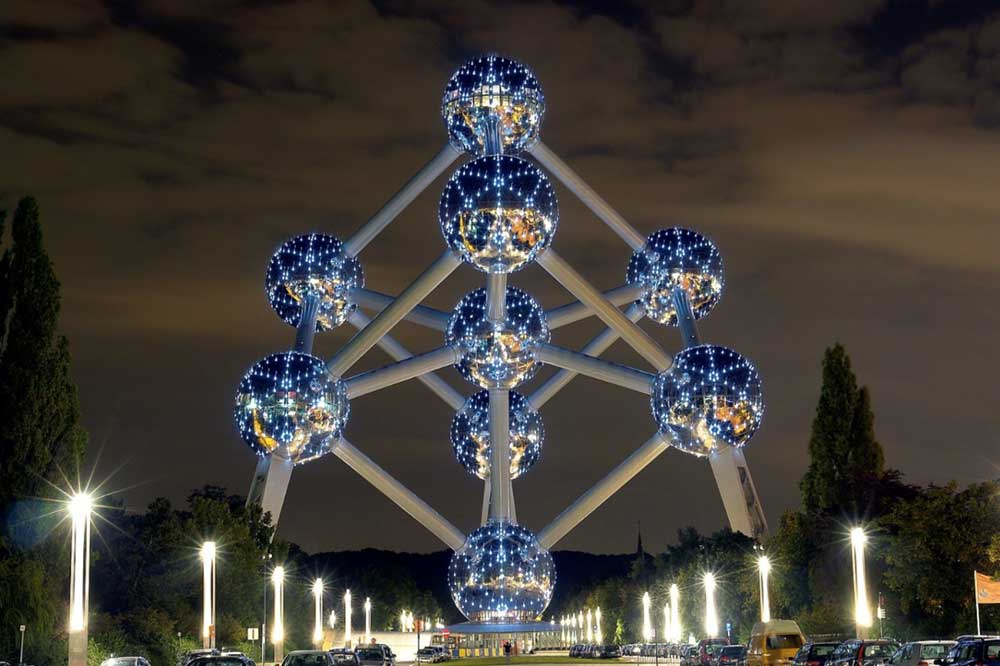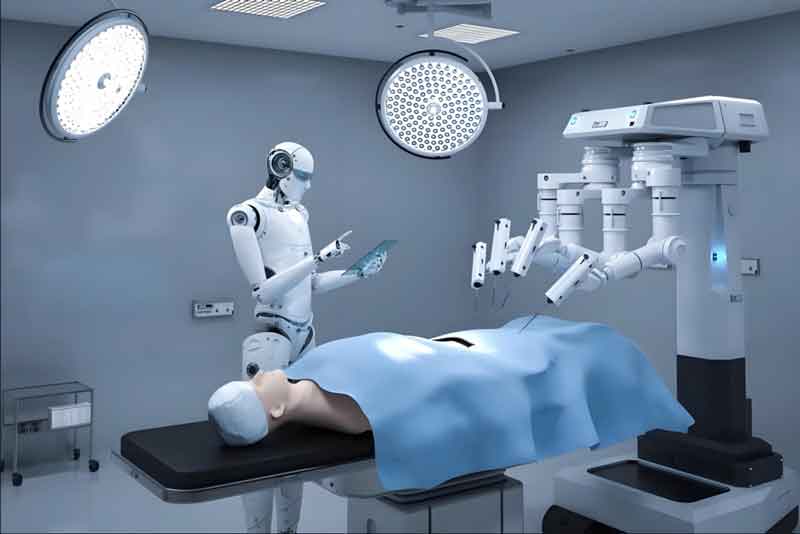The Atomium was located in Brussels, Belgium. It was designed by the Belgian engineer André Waterkeyn for the advent of the world Expo of 1958 in Brussels. It was finished just two months ahead of the expo, with a plan to survive only 6 months temporarily for the event. However, due to its popularity and architectural success in Brussels (known as the capital of Europe), it is still standing today. Even in the early 2000s, a magnificent renovation was planned and completed for its 50th anniversary.
The Unique Appearance of the Atomium
Atomium stands not only as a landmark in the Brussels skyline, but also a place of cultural heritage, historical heritage as well as tourist attraction. The unique structure of Atomium blurs its classification as the sculpture or as the architecture. Designed to replicate a unit cell of an iron crystal, it is shaped like the atoms that make up an iron crystal, only 165 billion times larger. It was constructed with nine 59-feet-diameter spheres connected to each other by long tubes containing elevators or stairways to reach the sphere. To highlight the nine spheres, the connecting tubes were covered with a paint camouflage while the spheres were highly polished and shiny. Atomium was initially designed to be 460 feet high but ended up with 334 feet high for the concern of threat to aircraft. Among the nine spheres, six of them are habitable but only five of them are open to the public for safety precautions. The spheres were interiorly museum exhibitions, a learning environment for children. Have to mention, the top sphere houses a panoramic lookout giving the best view and a restaurant serving authentic Belgian seasonal cuisine for anyone who might have an interest in a trip.

The Historical & Cultural Heritage of the Atomium
Apart from its aesthetic quality, the emphasis must be given to the historical background under which the Atomium was created. By 1950s, the world could only associate their real experience of atomic energy with the memory of the atomic explosions that destroyed Nagasaki and Hiroshima. In 1953, U.S. President Dwight Eisenhower managed to change the public perceptions by the speech titled Atoms for Peace delivered at the UN General Assembly, followed by an Atoms for Peace program. This program was launched to finance some of the first nuclear power reactors in the world. One of these 1st nuclear reactors in Europe was in Belgium, a monumental achievement which was then highlighted by the Atomium, the flagship building and emblem of the 1st Post War World’s Fair. With the slogan a world for a better life for mankind, Expo 58 aimed to articulate “the democratic will to maintain peace among all nations, of faith in both technical and scientific progress and, finally, an optimistic vision of the future of the new, modern and hyper-technological world that should enable mankind to live better lives”. The Atomium was thus designed and constructed to express the faith in peaceful use of atomic power for scientific advancement.
The Renovation of the Atomium
While the unique appearance, the historical and culturable heritage added the charm to this architecture wonder, the construction itself was a technical feat. The project necessitated the use of rare skills: to develop the spheres, calling on dozens of specialist steeplejacks, who could work at height on the spheres in the blazing summer heat and freezing winter conditions.

Though the Atomium was not intended to survive beyond the expo, the designers had imagined it to last for at least 10 years. It was the only major remnant of Expo 58. For 30 years’ lack of maintenance and repairment, it started to deteriorate in bad shape, with the tarnished appearance and the leaky structure. Due to lack of a solid plan and enough visitors to make it financially viable, it was almost demolished in the late 1990s. It was not until 2004 a complete renovation took place for a light show. During 2004 and 2006 the old Atomium was closed for the renovation. On 18 February 2006 the new Atomium was inaugurated, with a commemorative 2-Euro coin issued by the National Bank of Belgium for celebration.

To respect the original edifice as much as possible, the renovation work mainly includes 3 parts. First, the original aluminum skin was replaced with stainless steel plates as stainless steel is more corrosion resistant and provides better sound insulation. Second which is also a significant modification, a glass roof in the lift was installed, allowing visitors to see how fast they are going and to discover the amazing steel lattice. Third, the indoor and outdoor lighting system, devised and assembled for a light show. The world famous German industrial designer Ingo Maurer was responsible for the interior lighting. Besides, A visitors’ center was built at the foot of the building for the reception and convenience of the public.


